Inbox and Environment News: Issue 296
January 15 - 21, 2017: Issue 296
AUSTRALIA'S BEST GROMMETS TO HEAD TO NARRABEEN FOR THE RIP CURL GROMSEARCH PRES. BY FLIGHT CENTRE.
SYDNEY Friday, 13 January 2017: from Surfing NSWSome of the nation's best junior surfers will venture to Narrabeen next week as part of the Rip Curl GromSearch presented by Flight Centre National Final.
Over 50 aspiring professional surfers from all over Australia will contest the three-day National Final, which will run at the iconic Northern Beaches location from the 16th – 18th January.
“Last year we saw some of the most picturesque looking waves that we could possibly imagine for an event,” said Surfing NSW CEO Luke Madden. “With any luck we’ll see similar conditions that will allow the whole field to put on an impressive display of surfing and really show what they’re capable of.”
The Rip Curl GromSearch presented by Flight Centre will commence each day at 7:30am with the call for the days schedule and location confirmed via the event hotline at 6:45am. The event hotline number is 0458 247 212 which will leave a voice recorded message each morning of the event.
All Rip Curl GromSearch events include boys’ and girls’ divisions in 16 and under, 14 and under, and 12 and under age groups. Surfers receive points for their results in each event, which then count towards a National GromSearch ratings system, allowing surfers from around Australia to compare their results with contemporaries. Leaders on the National Ratings will then qualify for the last event of the series, the Rip Curl GromSearch National Final, to be held at North Narrabeen, NSW on January 16-18, 2017.
The Rip Curl GromSearch series started in 1999 as a one-day event at Jan Juc in Victoria. Since then it has developed into the strongest international series for 16 year and under surfers in the world. With parallel Rip Curl GromSearch series in over 10 countries, it has become a crucial stepping-stone in the development of elite junior surfers.
The list of previous GromSearch competitors highlights the elite level of competitors that make up the Rip Curl GromSearch series.
Current WSL World Tour surfers who have competed in the Rip Curl GromSearch include:
Male: Matt Wilkinson (Australia), Gabriel Medina (Brazil), Kolohe Andino (USA), Felipe Toledo (Brazil), Jordy Smith (South Africa), Nat Young (USA).
Female: Tyler Wright (Australia), Stephanie Gilmore (Aust), Malia Manuel (USA), Sally Fitzgibbons (Aust), Nikki Van Dijk (Aust), Tatiana Weston-Webb (Hawaii).
The 2016 Rip Curl GromSearch series is presented by FLIGHT CENTRE with managing partner Surfing NSW.
Citroen is the official vehicle partner of Rip Curl Australia. 2016 Rip Curl GromSearch SeriesEVENT 1 - Jan Juc, VIC - Sept 17 - 19, 2016EVENT 2 - Maroubra, NSW - Sep 24 - 27, 2016EVENT 3 - Trigg / Scarborough WA - Oct 7 - 9, 2016EVENT 4 - Yorkes Peninsula, SA - Nov 12 - 13, 2016EVENT 5 - Sunshine Coast, QLD - Dec 12 - 16, 2016National Final - North Narrabeen - Jan 16 - 18, 2017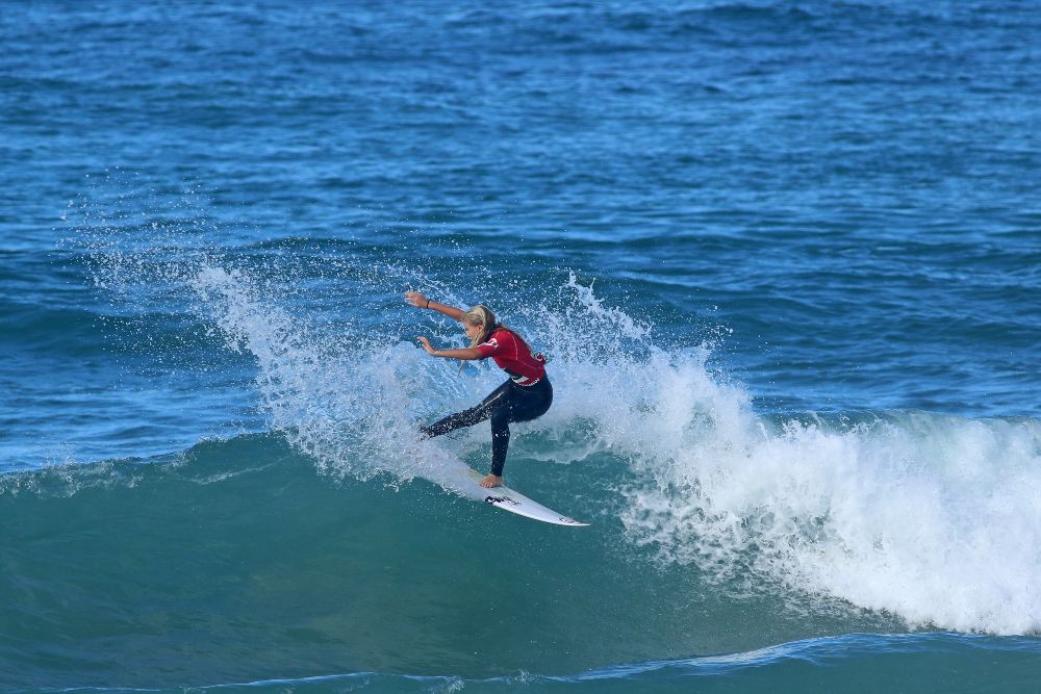 Local surfer Tru Starling (Narrabeen) will be competing in the upcoming Rip Curl GromSearch presented by Flight Centre National Final. Photo by Ethan Smith / Surfing NSW
Local surfer Tru Starling (Narrabeen) will be competing in the upcoming Rip Curl GromSearch presented by Flight Centre National Final. Photo by Ethan Smith / Surfing NSW

WestConnex To Destroy Over 800 Trees In Sydney Park, St Peters And Alexandria
January 9, 2017: By Westconnex Action GroupLate on Friday 6 January 2017, the major report outlining the trees to be destroyed for WestConnex in and around Sydney Park was released. These reports show the extent of the destruction planned in St. Peters and Alexandria. A total of 827 trees, including some that are highly significant, are to be destroyed across a 7.5 hectare swathe of land in Sydney Park, St Peters and Alexandria.
ABOUT THE REPORTSThe consent conditions for the WestConnex New M5 mandated that tree reports by an independent arborist must be prepared before any tree in or outside the project footprint is removed (condition B63). These reports must identify the impact on trees and vegetation of the project, and must be approved the the NSW Dept of Planning and Environment before any destruction works can commence....
The major tree report in this series was only published on the WestConnex website after 6pm on Friday 6 January, giving City of Sydney, Inner West Council, and local residents almost no time to check the reports meet the conditions before work is set to begin.
Read Westconnex Action Group outline of reports HERE
Top: Manly Knitting Nannas at WestConnex Protest Site - courtesy Manly Knitting Nannas - January 10, 2017
Previously: Sydney Park Reuse Project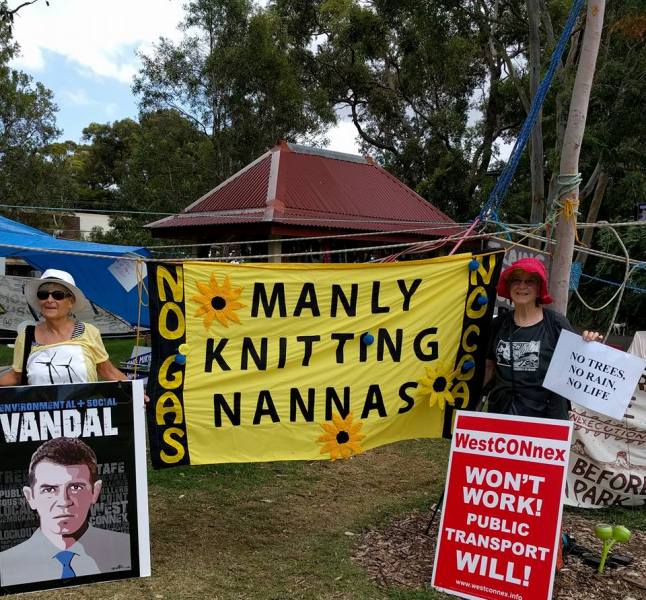

Clean Air For NSW Consultation Paper
Have your say on how we can improve air quality across NSWThe Clean Air for NSW Consultation Paper presents a proposed approach and actions for government to meet its goal of improving average air quality results across NSW. The Environment Protection Authority (EPA) is seeking community and stakeholder feedback on whether you think NSW is proposing the right actions to improve air quality.
Your submission can assist us in finalising Clean Air for NSW and improving air quality and public health.
Key questions to consider:- Do you have any comments on the proposed actions in the Clean Air for NSW Consultation Paper to improve air quality? (Please use headings to identify each action)
- Are there other issues and actions that Clean Air for NSW should cover?
- How do you want to be informed about and involved in improving air quality?
- Do you have any other comments or ideas on improving air quality in NSW?
Please include headings for specific actions where appropriate throughout your submission.
Make sure you include the following information at the top of your submission:- First name
- Last name
- Organisation you represent (if applicable)
- Email address
- Phone number
- Postcode
Submit your feedback by Friday 20 January 2017 Online
Email your comments to:
Post your submission to:
EPA Air PolicyPO Box A290Sydney South, NSW 1232
The EPA is committed to transparent processes and open access to information. The EPA may draw upon the contents of the submissions and quote from them or refer to them in publications. The EPA will treat the submission as public unless you indicate that you wish your submission to remain confidential.
The EPA will email an acknowledgment of submissions received by email within 72 hours of receipt.
- Do you have any comments on the proposed actions in the Clean Air for NSW Consultation Paper to improve air quality? (Please use headings to identify each action)
- Are there other issues and actions that Clean Air for NSW should cover?
- How do you want to be informed about and involved in improving air quality?
- Do you have any other comments or ideas on improving air quality in NSW?
- First name
- Last name
- Organisation you represent (if applicable)
- Email address
- Phone number
- Postcode
AGL Fined $124,000 In Land And Environment Court
12.01.2017: Departmental Media Release - Department of Planning and EnvironmentAGL Energy and its subsidiary AGL Upstream have been fined a total of $124,000 in the Land and Environment Court today for failing to disclose political donations when making planning applications.
The judgment is a result of a prosecution brought by the Department of Planning and Environment after a compliance investigation was undertaken following complaints from community groups.
This is the largest total penalty imposed since the provisions were introduced in 2008.
AGL Energy was fined $112,000 and AGL Upstream $12,000.
In addition to the fine, the companies have been ordered to pay the Department’s legal costs. AGL Energy pleaded guilty to 10 charges and AGL Upstream pleaded guilty to one offence of failure to disclose political donations under section 147 of the Environmental Planning and Assessment Act 1979.
The charges related to AGL’s coal seam gas projects in Gloucester and Camden; the Newcastle Gas Storage Facility; the Broken Hill solar plant and the Dalton Power Station.
General Counsel for the Department of Planning and Environment James Hebron said the company cooperated with the Department’s compliance investigation.
“Under planning legislation there is an obligation on a proponent when making a planning application to report political donations” Mr Hebron said.
“This is to ensure transparency in the planning process.”
Testing How Species Respond To Climate Change
January 10, 2017Predicting how species will respond to climate change is a critical part of efforts to prevent widespread climate-driven extinction, or to predict its consequences for ecosystems.
Usually, the current climatic range of a species is used to predict where it will occur under future climate change scenarios.
However, this approach overlooks two important factors that may affect species' responses to climate change:- Species may be able to change the climatic range they can inhabit through evolution
- Species within an ecological community may respond differently to climate change, meaning the competitors, predators, pathogens and parasites that a given species encounters under the new climatic conditions may also change.
In a new study, published in Global Change Biology, scientists from the Universities of Bristol, James Cook University, and Melbourne University in Australia tested the response of the tropical rainforest fly Drosophila birchii to a changing climate by transplanting flies in hundreds of cages along mountain gradients in north-eastern Australia, and measuring their reproductive success at different elevations.
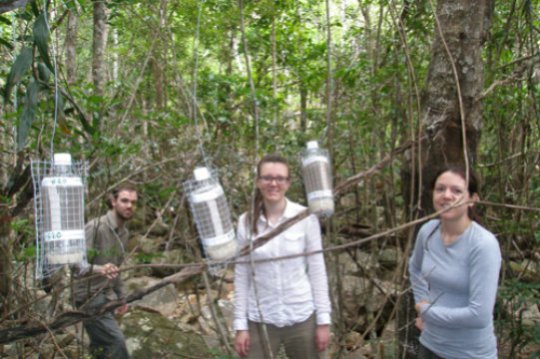
The team placing the cages used to transplant the rain forest flies.Credit: Eleanor O'Brien
Mountains are useful for exploring the effects of climate change because they show predictable changes in temperature and humidity with elevation: In general, sites at low elevations are warmer and drier than higher elevation sites.
By testing the success of many D. birchii families transplanted along elevation gradients, the team were able to measure genetic variation in responses to the thermal environment, which indicates the potential for thermal tolerances to evolve. They found that all families showed similar responses, indicating low levels of genetic variation in temperature sensitivity, and therefore little potential for climatic tolerances to evolve.
The team also compared the response of flies in cages (which experienced the local temperature and humidity, but not interactions with other species) with the abundance of D. birchii in wild populations at the same sites along mountain gradients (where other species were also present), to test whether interactions among species affect responses to climate change.
The reproductive success of D. birchii in cages was lowest at cold, high elevation sites and increased at warmer sites towards the bottom of mountains. Of particular interest however, was that the change in abundance of D. birchii in wild populations along mountain gradients differed from that of D. birchii success in cages. D. birchii was most common at intermediate elevations, with abundance declining at colder sites towards the summit, but also at warmer sites towards the bottom of mountains, where flies in cages thrived.
This suggests that different factors restrict the distribution of D. birchii at either end of its range. Low temperatures prevent expansion of D. birchii at higher elevations, whereas it appears that other species, which were absent from the transplant cages, limit the spread of D. birchii into warmer sites in nature.
Understanding how interactions among species in ecological communities will change as a consequence of climate change is a critical part of predicting the consequences for ecosystem function, and will be a focus of the team's future work.
Eleanor K. O'Brien, Megan Higgie, Alan Reynolds, Ary A. Hoffmann, Jon R. Bridle. Testing for local adaptation and evolutionary potential along altitudinal gradients in rainforest Drosophila: beyond laboratory estimates. Global Change Biology, 2017; DOI: 10.1111/gcb.13553
- Species may be able to change the climatic range they can inhabit through evolution
- Species within an ecological community may respond differently to climate change, meaning the competitors, predators, pathogens and parasites that a given species encounters under the new climatic conditions may also change.

New Approach For Assessing The Social Impacts Of Mining
08.12.2016: Ministerial Media Release - The Hon. Rob Stokes MP, Minister for PlanningThe assessment of the social impacts of mining projects will be strengthened following the exhibition of draft social impact assessment guidelines.
The guidelines have been developed to improve the quality and utility of social impact assessments, which in turn will drive better project design and provide greater certainty to local communities and proponents.
Examples of positive social impacts may include increased employment opportunities and support for local businesses and organisations, whilst examples of negative social impacts may include community dislocation and amenity loss.
Planning Minister Rob Stokes said the new guidelines reflect the important principle that people are at the heart of planning decisions.
“It’s critical that impacts on communities are thoroughly considered and addressed in the assessment of mining projects,” Mr Stokes said.
“These guidelines will support consistency and fairness in decision making, while driving greater accountability and transparency with respect to the social impacts.”
The draft guidelines have been informed by:- meetings with local groups in eight locations across rural, regional and remote NSW;
- advice on current leading practice from the University of Queensland’s Centre for Social Responsibility in Mining, a respected leader in the field of social impact assessment; and
- consultation with peak community, environment, industry, local government and Aboriginal groups via the Department of Planning and Environment’s Resources Advisory Forum.
The draft guidelines have been released for an extended public exhibition and submission period of 12 weeks from 8 December 2016 until 3 March 2017. The Department will also conduct community workshops and stakeholder briefing sessions.
To view the draft guidelines or to make a submission, please visit http://www.planning.nsw.gov.au/Policy-and-Legislation/Social-Impact-Assessment.
- meetings with local groups in eight locations across rural, regional and remote NSW;
- advice on current leading practice from the University of Queensland’s Centre for Social Responsibility in Mining, a respected leader in the field of social impact assessment; and
- consultation with peak community, environment, industry, local government and Aboriginal groups via the Department of Planning and Environment’s Resources Advisory Forum.
Fish Kill Costs BlueScope Steel
Media release: 11 January 2017 - EPAThe NSW Environment Protection Authority (EPA) has issued BlueScope Steel with a fine of $15,000 after water containing cyanide, well above the level permitted, was discharged into a drain at the Port Kembla Steelworks, in breach of the company’s environment protection licence.
The incident occurred in September 2016 when a water valve was left on, causing water and coke oven gas condensate, which contains cyanide, to overflow into an internal drain at the premises. The internal drain (Slab Mill Drain) ultimately flows to Port Kembla Inner Harbour.
EPA Officers attended the incident and observed approximately 10 to 15 small dead and distressed fish in the drain. No impacts to fish in Port Kembla Harbour were reported.
The EPA licence permits a discharge of up to 0.1 mg/l of cyanide to the drain but testing undertaken by the EPA at the time of the discharge found cyanide levels of up to 0.3 mg/l in the drain.
EPA Manager Regional Operations Illawarra Peter Bloem said the incident occurred because operating procedures weren’t followed and errors in judgement were made.
“Impacts to the local environment could have been prevented. The overflow triggered alarms, but these were believed to be false and were ignored.
“As well as issuing the penalty notice, the EPA has also issued an Official Caution to BlueScope Steel and added a Pollution Reduction Program to their environment protection licence to further safeguard the environment.”
The Official Caution was issued for failing to operate the plant and equipment in a proper and efficient manner as required by the licence.
The Pollution Reduction Program requires the company to investigate risk reduction measures that could be introduced to prevent future incidents and to report back to the EPA by 30 April 2017.
BlueScope Steel responded to the incident promptly and took steps to reduce the environmental impacts. They also carried out water quality sampling and analysis.
The company has also implemented additional controls and updated their standard operating procedures to prevent a recurrence of this type of incident.
Coke ovens gas is produced during the conversion of coal into coke which is used extensively around the steelworks for fuel. Coke oven gas condensate can collect on the inside of gas mains and requires strict management to avoid water pollution.
Penalty notices, official cautions and pollution reduction programs are a range of tools the EPA can use to achieve environmental compliance including formal warnings, official cautions, licence conditions, notices and directions and prosecutions. For more information about the EPA’s regulatory tools, see the EPA Compliance Policy http://www.epa.nsw.gov.au/legislation/prosguid.htm.
Weekly Rainfall Update
Issued 10 January 2017 by BOMKey points- The monsoon trough extended over northern Australia, producing heavy falls in parts of the Kimberley, Top End and northern Queensland.
- A low pressure system embedded on the monsoon trough brought locally heavy falls to the north tropical coast of Queensland.
- The highest weekly total was 822 mm at South Johnstone in northern Queensland.
Weekly rainfall totals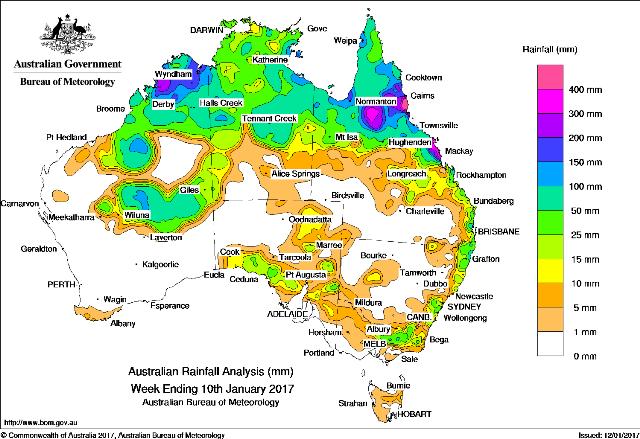
For the week to 10 January 2017, rainfall was recorded across all of northern Australia - from the Pilbara and the central interior of Western Australia, in much of the Northern Territory; also in the central west, northern and the central coast of Queensland.
Rainfall was also recorded in the southern, central and eastern districts of South Australia; northeastern Victoria; northeastern Tasmania and much of eastern New South Wales.
For more rainfall details, go to www.bom.gov.au/climate/rainfall/
- The monsoon trough extended over northern Australia, producing heavy falls in parts of the Kimberley, Top End and northern Queensland.
- A low pressure system embedded on the monsoon trough brought locally heavy falls to the north tropical coast of Queensland.
- The highest weekly total was 822 mm at South Johnstone in northern Queensland.

Myna Action Group
Pittwater Natural Heritage Association (PNHA)
Indian Mynas - what a pest - like flying rats. Can you help distribute our new flyers about our Northern Beaches Indian Myna Action Group?
They are for people in cafes and coffee shops, explaining why not to feed these birds and how to get involved in their control. Just take a few and hand out where ever you can. Cafe staff are usually glad of the help. Contact us on pnhainfo@gmail.com for more information and have a look athttps://www.facebook.com/MynaProblems/
Indian Mynas are displacing our native birds. They often nest in and around shops where their food source is. I took this one down this morning in Avalon (no chicks or eggs but I disturbed the female). There were literally hundreds of tiny bits of plastic in the nest which makes you think that all this plastic would be swilling down the stormwater drains into the sea.
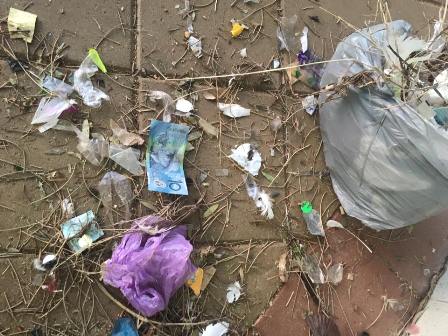

Planning Reforms To Boost Housing Supply
09.01.2017: Ministerial Media Release - The Hon. Rob Stokes MP, Minister for PlanningMaking it simpler to build a home and enhancing community participation in key decisions will be now easier through a package of red tape-busting reforms released for consultation by the NSW Government today.
Planning Minister Rob Stokes said proposed amendments to the Environmental Planning and Assessment Act 1979 target delays in Development Application (DA) processing by councils, while also enhancing community confidence in the planning system.
The proposed changes include standardising the format of council’s development control plans to make them easier to understand and navigate, giving developers incentives to resolve objections before lodging DAs, and focusing councillor attention on strategic planning with greater numbers of DA assessments being processed by staff or local planning panels.
Local communities will have greater opportunity to participate in strategic planning for their neighbourhoods as early as practicable, with each planning authority required to prepare community participation plans.
Other proposed changes include leveling the playing field for the assessment of major projects by ending transitional arrangements under Labor’s controversial Part 3A development assessment which will prevent the misuse of modifications.
Mr Stokes said the state was experiencing the longest housing construction boom in NSW history with the latest figures for the 12 months to October showing 74,577 approvals, the second highest on record.
“However, there is still more work to do and these planning reforms build on our impressive results over the past five years by making it easier to build new homes,” Mr Stokes said.
“The NSW Government is determined to do everything it can, including making the planning system more efficient, to ensure housing supply gets to homebuyers fast.”
Mr Stokes said NSW Treasury estimated there is pent up demand for up to 100,000 new homes due to the former Labor Government failing to provide adequate supply.
Proposed updates to the EP&A Act include:• Investigating incentives for developers to consult with neighbours and the surrounding community to ensure disputes are resolved prior to a Development Application proceeding to council;• New powers for the Planning Minister to direct a council to establish a local planning panels of experts and community representatives;• A standardised format for development control plans, produced in consultation with councils, to promote consistency across the confusing array of up to 400 formats currently used in NSW;• Authority for the Department of Planning and Environment Secretary to ensure the efficient processing of developments that require separate approvals and advice under different NSW legislation;• Measures to ensure that local environmental plans are kept up to date;• Extending and improving the complying development assessment process that currently covers most new one or two storey dwellings, to include greenfield developments and terrace housing.• Simplifying and consolidating building provisions to remove confusion for developers;• Widening the availability of internal review options for proponents aggrieved by council decisions as a faster, low cost alternative to court action; and• Introducing fair and consistent planning agreements between developers and councils to ensure there is more transparency on deals to fund public amenities, affordable housing, transport and other infrastructure.
Mr Stokes said the planning reforms would assist the NSW Government deliver the 725,000 new homes forecast to be required by 2036 to house an extra 1.7 million residents.
The community is encouraged to have its say on the proposed amendments to the Environmental Planning and Assessment Act 1979. These updates are on public exhibition from 9 January – 10 March 2017, and can be viewed at www.planning.nsw.gov.au/legislative-updates.
The consultation package comprises four documents:2. Bill guide 3. Draft Bill - Environmental Planning and AssessmentAmendment Bill 2017
Have your say on the draft updates to the EP&A Act Consultation is now underway on the draft amendments to the EP&A Act, details of which are at the ‘Key documents’ tab above.
The public consultation period for the Bill is from 10 January 2017 to 10 March 2017.
We encourage our stakeholders, interested community groups and individuals to review the reforms and respond:• by mail to: Planning legislation updates 2017NSW Department of Planning and Environment GPO Box 39Sydney NSW 2001
Coalition Has Still Not Returned Planning Powers To The Community
9 January, 2017: Nature Conservation Council NSWChanges to the NSW planning system touted as the fail to restore the community’s right to have bad decisions reviewed by the courts.
“While today’s announcement contains some positive changes, it fails to deliver on the Coalition’s 2011 election promise to return planning power to the people,” Nature Conservation Council Campaigns Director Daisy Barham.
“The minor improvements in today’s package do not compensate for the loss of community control of planning decisions resulting from council amalgamations and the appointment of panels and commissions that override local council planning powers.
“Crucially, the changes do not restore the rights of ordinary citizens to challenge bad decisions in the courts.
“These merits appeal rights were effectively stripped by Premier O’Farrell when he added the Planning Assessment Commission as a new tier of the planning system.
“Denying communities the right to have decisions scrutinised by an impartial arbiter means bad decisions go unchallenged, increasing the risk of serious harm to wildlife and public health.
“The planning system already favours developers, who have the resources and connections to ensure their interests are protected.
“We need a planning system that prioritises people and wildlife over the interests of big business.”
Ms Barham said the new package contained some positive elements, including proposals for: - Improving the quality of environmental assessments
- Requiring more comprehensive assessment of modifications and expansions of mines, and
- Increasing emphasis on community participation in planning decisions
“Planning decisions affect all aspects of our lives, so it is vital it’s important the government get it right,” Ms Barham said.
“Unfortunately, Mr Stokes has missed an opportunity to give the people the power to shape the kinds of sustainable, just communities that they want.”
- Improving the quality of environmental assessments
- Requiring more comprehensive assessment of modifications and expansions of mines, and
- Increasing emphasis on community participation in planning decisions
New Planning Law Changes Make NSW Mine Approvals Faster With No New Protections For Community Or Environment
January 09, 2017: Media Release – Lock the GateLock the Gate Alliance says new draft changes to the Environmental Planning and Assessment Act, released by the NSW Government today, may make it easier for coal mines to secure rapid approval in NSW and do not provide a single measure to protect farmland, water resources or the checks and balances needed to protect the public from bad mining decisions.
Lock the Gate Alliance NSW Coordinator, Georgina Woods said, “These draft changes could have been written by the mining industry itself. They provide no new protections for the public or the environment, while shortening the approval process for big mining companies to steamroll over communities.
“If you’re going to shorten decision times, then at least bring in laws to make sure the right decisions get made and that mines cannot be approved that will damage farmland, drinking water catchments and rural communities, and for pity’s sake, give communities the right to query mining approvals in court.”
The draft bill, released by the Planning Minister today for public comment until 10 March, proposes to do away with “reviews” held by the Planning and Assessment Commission and make substantial changes to the process, including changing the Commission’s name to the Independent Planning Commission and rolling the Gateway Panel into the Commission.
“Mining affected communities have made it abundantly clear that the lack of ability for members of the public to seek review of decisions to approve damaging coal mines is leading to environmental damage and social dislocation. Without the ability for communities to query approvals in court, the new Independent Planning Commission is not going to be accountable to the public and we will continue to see mining conflict consuming regional New South Wales.
“Though Commission reviews will be scrapped under the new laws, the Government is keeping the worst aspect of the reviews: the removal of third party appeal rights against mining approvals.
“Overall, the Baird Government is giving the mining industry what it wants while leaving communities to suffer under the same unfair rules they’ve already got.
“We urge the Planning Minister to take to Parliament planning law changes that restore balance. The future of rural communities and water resources depends on it,” Ms Woods said.
Community Group’s Court Action Forces Stricter Environmental Protections For Queensland Coal Seam Gas Project
9 January 2017: Media Release - EDO NSW
Community group Western Downs Alliance has successfully negotiated the addition of important environmental conditions to the Santos GLNG Gas Field Development Project in the Surat Basin, Queensland.
Western Downs Alliance, represented by the Environmental Defenders Office (EDO) NSW, launched a challenge in the Federal Court of Australia against the Federal Minister for the Environment and Energy’s approval of the project, which was granted on 22 March 2016. The Alliance’s challenge was that under the approval the Minister had allowed millions of litres of CSG waste water from the project to be released into surface water systems, such as the stunning and environmentally important Dawson River, without having assessed the environmental impacts this would have.
The Alliance argued that the Minister’s approval was unlawful because Australia’s environmental laws require that the Minister properly assess a major CSG project’s impacts on water resources such as the Dawson River. This requirement was inserted into Australia’s environmental laws in June 2013, and is known as the Water Trigger. Before the Minister approved the project the Independent Expert Scientific Committee advised that there is ‘considerable scientific uncertainty about potential impacts [of this project] on surface water and groundwater and associated ecosystems’, and that the project’s environmental impacts should be properly assessed.
The case was set down to be heard by the full bench of the Federal Court of Australia on 13 February 2017, but on 23 December 2016 the Minister and Santos agreed to amend the approval, satisfying the Alliance’s claim. The amendment adds an important condition to the approval: that the project is prohibited from discharging CSG waste water to any watercourse. The amendment means that if Santos in fact wants to release its CSG waste water into any water course in the future it must go through the legal process and have the proposal assessed by the Minister.
“Although many in the community are concerned about the environmental and social impacts of this substantial CSG project and argue that it should not have been approved, these new conditions on the project should be seen as a win for environmental protection and the integrity of the water trigger, which is an important part of Australia’s environmental laws,” said Sue Higginson, Chief Executive Officer, EDO NSW. “The Minister’s original approval left the door open for Santos to discharge substantial amounts of CSG waste water into surface water systems without further assessment. By taking legal action, our client has ensured that there will be no release of waste water to surface waters under this project and that any future proposal will require a separate application and assessment.”
“The community is rightly concerned about Santos’s activities in the Surat Basin – in 2013 Santos began discharging CSG waste water generated from its existing GLNG Project into the Dawson River after discovering it has no other viable means of dealing with the millions of litres of waste water. So it’s critically important that the Government and Santos are held to account as to how the waste water generated by the new CSG wells in the extension project will be dealt with under the Commonwealth approval.
“This case is another great example of the importance of the community’s right to be able to uphold Commonwealth laws designed to protect the environment. The community’s right to access environmental justice is essential to ensure our environment is not irreversibly degraded and our economy grows sustainably.”
Invitation To Nominate Significant Places To The National Heritage List
Media release - The Hon. Josh Frydenberg MP, Minister for the Environment and Energy
All Australians are invited to nominate places of exceptional natural, Indigenous, or historic significance to the nation for possible inclusion in the National Heritage List.
Nominations are now open for the 2017-18 assessment period and all Australians are welcome to recommend a place that contributes to our national story.
The National Heritage List celebrates and protects places of outstanding heritage value to all Australians. It reflects the story of our development as a nation, our spirit and ingenuity, and our unique, living landscapes.
There are 107 sites in the National Heritage List, from well-known places such as Uluru and the Sydney Opera House to lesser-known but equally important sites such as the Dinosaur Stampede National Monument in Queensland or the Bonegilla Migrant Camp in Victoria.
Listed places are protected under the Australian Government’s Environment Protection and Biodiversity Conservation Act 1999 and approval must be obtained before taking any action to ensure there is no significant impact on the national heritage values of the place.
Nominations for the National Heritage List should set out the qualities or values of the place that make it outstanding to the nation by indicating how it meets one or more of the heritage criteria. It is also important to ensure that the nomination is supported by all owners and occupiers and Indigenous people with rights or interests.
After consideration of all the places nominated and advice from the Australian Heritage Council on them the Government will decide on a final list of places for the Council to assess.
The Australian Heritage Council will invite public comment on the places under assessment and consult extensively with everyone interested in the place, particularly owners and occupiers and Indigenous people with rights or interests.
Everyone is encouraged to get involved in this process and nominate places of outstanding significance to our nation.
The nomination period for the National Heritage List opens today (13 December 2016) and closes on 17 February 2017. For more information visit www.environment.gov.au/heritage/places/nominating-heritage-place
Variation To AGL Environment Protection Licence
Media release: 11 January 2017 - EPAAs AGL continues to withdraw from its Gloucester gas operations, the NSW Environment Protection Authority (EPA) has reviewed and varied its Environment Protection Licence to reflect the current operations.
Environment Protection Licences are a critical tool in regulating industry in NSW. The EPA reviewed AGL’s licence for its Gloucester operations, and found there were many conditions that simply didn’t apply now that its exploration phase has ceased.
Under the revised licence, AGL can use water from the Tiedmans Dams for irrigation of pasture. The 30-35 megalitres of water, which is treated and highly diluted from rainfall and runoff, now meets the Australia and New Zealand Environment Conservation Council’s criteria for agricultural irrigation.
The EPA is satisfied that the water can be used for irrigation of pasture without any adverse impacts to the environment. AGL is required to undertake regular monitoring of the water in the dams.
The EPA will continue to monitor and review AGL’s Environment Protection Licence as AGL continues to withdraw from its Gloucester operations.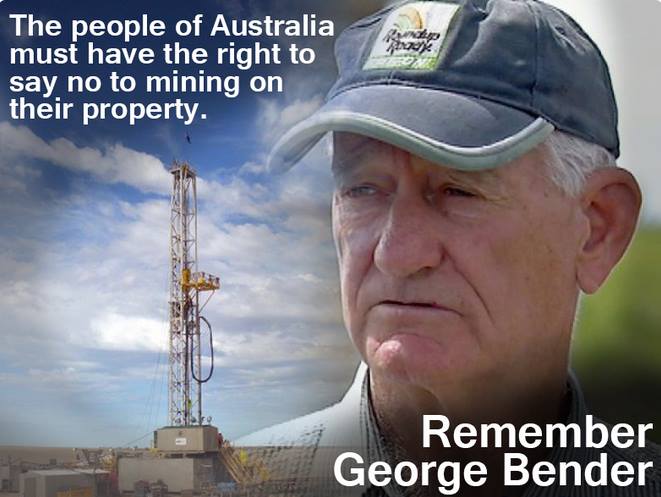

$10 Million To Protect Koala Habitat
Media Release: Hon. Mark Speakman, Minister for the Environment The NSW Government will invest $10 million over five years to acquire vital koala habitat and will embark on a whole-of-government koala strategy to secure NSW koala populations, Environment Minister Mark Speakman announced today.
The NSW Chief Scientist and Engineer Professor Mary O’Kane AC’s Report of the Independent Review into the Decline of Koala Populations in Key Areas of NSW, released today, recommended developing an overarching strategy and investing in key areas of koala habitat.
Mr Speakman said the NSW Government commissioned the independent review in March.“The independent review proposes 11 recommendations to help develop a strategy that can secure and eventually increase NSW koala numbers,” Mr Speakman said.
“The strategy will also complement the koala conservation work already being done under the NSW Government’s flagship $100 million Saving our Species program. This work will include projects, which improve koala habitat and trialling artificial water sources for koalas to mitigate heat stress.
“The $10 million investment follows the creation in March of flora reserves totalling 120 square km on the South Coast, run by the National Parks and Wildlife Service, to protect the last known local koala population.”
A three-month consultation program will include regional community information sessions, stakeholder meetings, webinars and information/feedback via a web portal.
“We want communities to look at the independent review and provide input to help direct the NSW Government’s strategy so we can preserve this iconic species for all generations to come,” Mr Speakman said.
To comment on the strategy’s direction visitwww.environment.nsw.gov.au/animals/nswkoala-strategy.htmand to find out more about the NSW Government’s koala conservationefforts through the Saving our Species program
To read the report: Independent Review into the Decline of Koala Populations in Key Areas of NSW (PDF: 52 kb)
Public exhibition for the Saving our Species Iconic Koala Project is from 4 December 2016 to 11:59pm 3 March 2017. You are invited tocomment on the Saving our Species Iconic Koala Project by sending a written submission during this time. Visit: HERE
_____________________________
Extracts from Independent Review into the Decline of Koala Populations in Key Areas of NSW (PDF: 52 kb)
An important finding of this review is that it may not be possible to ensure all koala populations continue to persist in all locations. There are some populations where government and community action can help secure ongoing viability but there are also areas where the historical land use decisions, current competing land uses, as well as risks from road strike, dog attack and, in some areas, drought and bush fire events mean that it will be much more difficult to secure those populations. Government will need to make clear choices and invest resources where it is most likely to make a difference.
Critical to this are data. We need more and better quality data and more information to prioritise investment, to get the most out of the various regulatory and management tools we have available and to know if we are making progress towards the overall goal. New sensor and data analytics technology can make data gathering more efficient and cost effective. Key elements of a whole-of-government koala strategy should be to:- prioritise data gathering and research about populations, habitat and threats, including the cumulative impacts of multiple threats, to inform better planning and management decisions
- review and align the various legislative and management arrangements to ensure
- improved outcomes for koalas across different land uses and tenures
- work across tenures to identify and implement on-ground actions that improve connectivity and resilience against threats
- identify incentives for best practice new development and ongoing land use in all cases where koala populations may be adversely affected across tenures, industries and land users
- establish a framework for on-going coordination and cooperation of land managers, policy makers, researchers and the community to deliver the defined actions.
While many of the recommendations in this report aim to understand and address threats to koala populations, it is also important to support those who respond when the threats cannot be mitigated. Fauna rehabilitation groups play a critical front-line role in assisting the recovery of individual koalas, most commonly injured by car strikes, dog attacks or fire.Successful implementation of a NSW koala strategy should lead to the following outcomes:- we will know which koala populations have the potential for long term viability
- we will have evidence that threats to these populations have been identified and mitigated
- the community will feel confident that new development and ongoing land use will not threaten key koala populations
- our scientific knowledge of koala populations, dynamics and health will be substantially increased
- the number of koalas will become stable and then start to increase.
A NSW koala strategy should provide clear benefit to key koala populations in NSW.
However, in identifying and protecting koala habitat and managing key threats, this strategy will also benefit other native species and NSW landscapes more broadly.
REPORT RECOMMENDATIONS:This review makes 11 recommendations to inform the development of a NSW koala strategy.
Recommendation 1That Government adopt a whole-of-government koala strategy for NSW with the objective of stabilising and then starting to increase koala numbers.Recommendation 2That Government initiate a program to improve data on the number, location and occurrence of koalas in NSW, including trends over time, taking advantage of new sensor and communication technologies and data analytics within 12 months of receipt of this report.Recommendation 3That Government publish a state-wide predictive koala habitat map within three years of receipt of this report, with immediate priority given to improving coverage of the north coast.Recommendation 4That Government improve outcomes for koalas through changes to the planning system.Recommendation 5That Government improve outcomes for koalas through the Biodiversity Conservation Bill and associated Regulations.Recommendation 6That Government investigate models for guiding and incentivising collaborative best practice for new development and ongoing land use occurring in areas of known koala populations across tenures, industries and land users.Recommendation 7That Government agencies identify priority areas of land across tenures to target for koala conservation management and threat mitigation.Recommendation 8That Government, through the Office of Environment and Heritage, convene two symposia within 12 months of receiving this report: one for scientists active in koala research and land managers to develop a koala research plan; and one focussed on koala rehabilitation to identify actions to optimise the delivery of and support for the network of koala rehabilitationgroups and carers.Recommendation 9That Government establish the Australian Museum as a preferred repository for koala genetic samples in NSW, and all data and metadata associated with these samples should be deposited into the SEED Environmental Data Portal (extended if necessary to includeflora and fauna).Recommendation 10That Government facilitate the exchange of information among land managers, local government, the research community and the broader community.Recommendation 11That Government draws on knowledge and shares information with local community members through a program that supports localised engagement between liaison people and residents and industry.
Source: Report of the Independent Review into the Decline of Koala Populations in Key Areas of NSW
- prioritise data gathering and research about populations, habitat and threats, including the cumulative impacts of multiple threats, to inform better planning and management decisions
- review and align the various legislative and management arrangements to ensure
- improved outcomes for koalas across different land uses and tenures
- work across tenures to identify and implement on-ground actions that improve connectivity and resilience against threats
- identify incentives for best practice new development and ongoing land use in all cases where koala populations may be adversely affected across tenures, industries and land users
- establish a framework for on-going coordination and cooperation of land managers, policy makers, researchers and the community to deliver the defined actions.
- we will know which koala populations have the potential for long term viability
- we will have evidence that threats to these populations have been identified and mitigated
- the community will feel confident that new development and ongoing land use will not threaten key koala populations
- our scientific knowledge of koala populations, dynamics and health will be substantially increased
- the number of koalas will become stable and then start to increase.
New NSW Education Standards Authority
- setting the NSW K-12 curriculum
- accreditation of teachers, registration of schools and home schooling
- delivering High School Certificate (HSC)
- approving tertiary teaching degrees, including minimum entry standards and a pre-graduate literacy and numeracy test.
Health Warning To Avoid Mosquitoes During Holiday Season
- Screening all windows and doors to prevent mosquitoes from coming inside.
- Avoid being outside unprotected, particularly during dawn and dusk when mosquitoes are most active. When outside cover up as much as possible with light-coloured, loose-fitting clothing and covered footwear.
- Apply mosquito repellent regularly to exposed areas (as directed on the container). Repellents containing Diethyl Toluamide (DEET) or Picaridin are best. Repellents containing oil of lemon eucalyptus or p-Menthane-3.8-diol (PMD) also provides adequate protection.
- Don’t use repellents on the skin of children under the age of three months. Instead, use physical barriers such as netting on prams, cots and play areas for babies.
- Use vaporising mats indoors. Devices that use light to attract and electrocute insects are not effective.
- When mosquitoes are present inside the room, use over-the-counter insecticide sprays, especially behind furniture and dark places.
- When camping, use flyscreens, or sleep under mosquito nets.
- Limit the number of places around your home for mosquitoes to breed by getting rid of items that hold water or by emptying the containers.
Macquarie University Among First In The World To Receive Eye Camera For The Early Detection Of Alzheimer’s
- MQ Health and Edith Cowan University are the first in NSW and WA to have access to a camera that can screen for pre-clinical Alzheimer’s via a non-invasive retinal imaging scan, in a single visit. Early detection currently requires multiple clinical visits, is invasive and often expensive, and involves analysis of brain and spinal cord fluid as well as advanced metabolic imaging.
- The NASA-inspired technology could also be used to identify other disorders, such as age-related macular degeneration, glaucoma, and diabetic retinopathy, as well as monitor response to treatment.
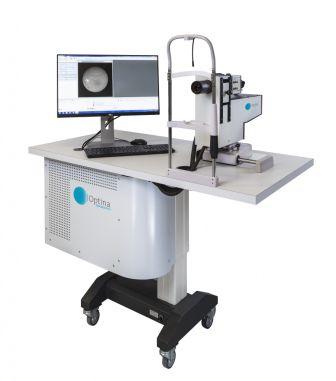
Let Kids Plan How They Live And Play
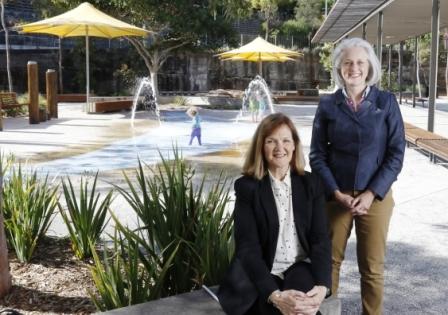
Remote Australians Connected To Healthcare
January 10, 2017: CSIRO
The tyranny of distance is a major barrier for remote Australians seeking medical assistance for chronic disease.
Almost 50 per cent of Australians suffer chronic diseases such as cancer, mental health or diabetes and a further 13 million are at risk of developing chronic disease.
Access to primary healthcare practitioners who can deliver lifestyle interventions is key to addressing these challenges, but Australians living in remote and regional areas are disadvantaged by limited access to professional medical help.
Now, a new partnership between CSIRO's Data61 and regional allied health network Health Team Australia (HTA) will help address inequities in rural and remote areas by providing an easy to use telehealth solution, expected to connect up to 20,000 patients with online healthcare professionals.
An alliance between HTA and Coviu, a CSIRO Data61 project, will see Coviu's real-time communication online video platform rolled out to HTA customers across Australia from November last year.

The new video consultation service will extend existing healthcare solutions and services from professionals such as exercise physiologists, dieticians, psychologists, mental health nurses and occupational therapists.
HTA's new online service will be offered to patients via a range of partners across Australia.
Non-profit YMCA in Victoria, NSW and the ACT has already begun delivering these services to metropolitan communities and are now extending their health plan and coaching services to those that don’t have access to a local YMCA.
HTA spokesperson Andrew Mahony is excited about the impact the partnership will have on rural and remote communities.
"Coviu gives health professionals direct access to the lives of remote patients so they can prescribe a health plan that is meaningful to their lives and relevant to their situation," Mr Mahony said.
"It enables us to provide individuals and organisations in rural and remote areas with evidence-based support and on-demand access to allied health experts.
"Coviu gives people the opportunity to stay in their community for longer as they age and continue to play a meaningful role in the community."
Coviu Project Director, Dr Silvia Pfeiffer, said the platform was designed to seamlessly integrate into existing workflows, allowing practitioners to live-share medical data and images.
"Approximately 10 per cent of the Australian population is spread across 90 percent of its area, and these people have poor access to medical specialists that's taken for granted in large metropolitan areas," Dr Pfeiffer said.
"There is a real need to make video consultations a standard delivery mechanism of health services across Australia. Coviu does so in an affordable manner with the tools that clinicians need."
An analysis of Medicare statistics from 2016 showed that less than 4 per cent of health practitioners in private practice currently provide telehealth services to their patients.
Data61 CEO Adrian Turner said this was an example of how Australian start-ups are working with industry to transform the health sector and deliver new services to Australians.
"By collaborating with industry partners we can help deploy digital technologies on a national scale, providing cost effective and tailored health services to all Australians," Mr Turner said.
Byzantine Skeleton Yields 800-Year-Old Genomes From A Fatal Infection
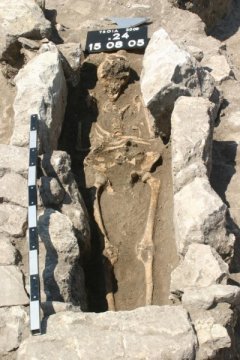
Studying The Behaviour Of Male Aedes Aegypti Mosquitoes
Australia Post Celebrates The Year Of The Rooster
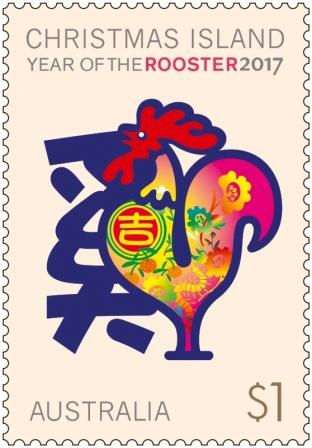
Business Backs Prime Minister’s Veterans’ Employment Program
Resources And Energy Exports Set To Reach Record Highs
Commencement Of The Redistribution Of Federal Electoral Divisions In Queensland
Selection Trials For Invictus Games 2017
Have Your Say On The Redevelopment Of Cockle Bay Wharf
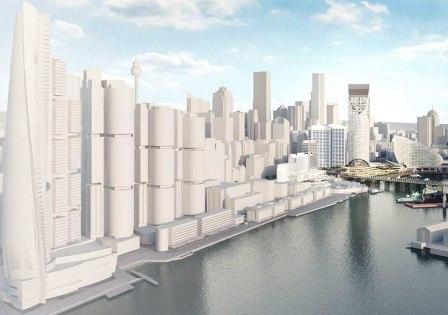
- demolition of existing site improvements
- up to 12,000m2 of public domain space
- building envelopes for a tower base and a tower up to 235 metres high
- a maximum gross floor area of 85,000m2 for commercial and 25,000m2 for retail development.
Have Your Say On The Redevelopment Of Harbourside Shopping Centre
- a network of open space areas and pedestrian links
- building envelopes for the base of a tower and a tower up to 166.35 metres above sea level
- a maximum gross floor area of 87,000m2 for residential and non-residential uses.
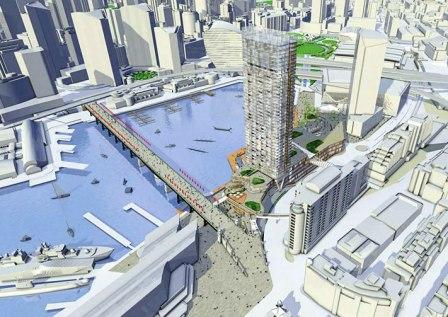
Have Your Say On A Modification To The Bulk Liquids Storage Facility At Port Botany
- construction of a new access road and driveway
- construction of four new road tanker bays, driver amenities building and extension to existing warehouse
- upgrade to the vapour recovery unit
- installation of additional transfer pumps and pipelines and associated infrastructure.
How Earth's Previous Moons Collided To Form The Moon: New Theory
Surf Photo And Surf Video Of The Year
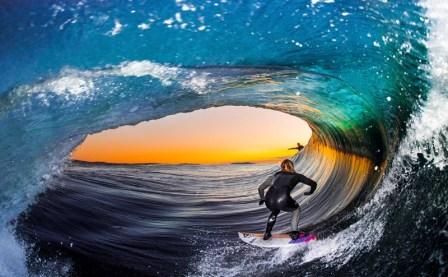
Disclaimer: These articles are not intended to provide medical advice, diagnosis or treatment. Views expressed here do not necessarily reflect those of Pittwater Online News or its staff.